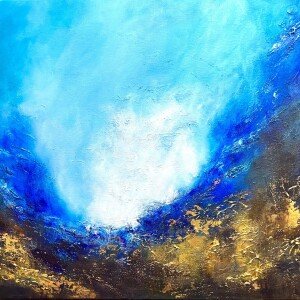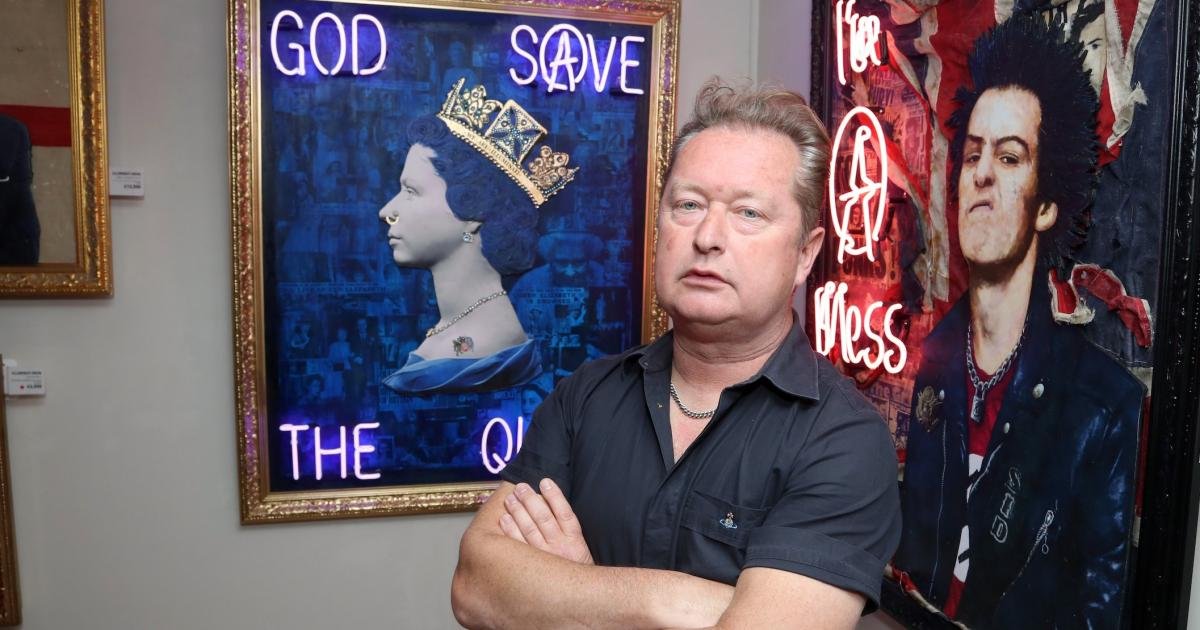Artist Stephen Hamilton gazes up at his woven canvas where figures begin to emerge on top of the cloth. At the center, a Yoruba woman from what is now Nigeria works on an upright loom. To her right, a Kongo man from what is now the western Democratic Republic of Congo weaves on an upright raffia loom, while three other weavers work below.
These figures embody the enduring spirit of intensive craftsmanship—a spirit Hamilton embraces in his creation, “Under the Spider’s Web.”
“ It is a celebration of Black craft and Black labor,” he explained at Alchemy Station, where he is a studio resident. “It’s a love letter to the things that Black hands make. It’s a tribute to ancestral traditions and also thinking about weaving and working on these like art forms as a form of ancestral connection.”
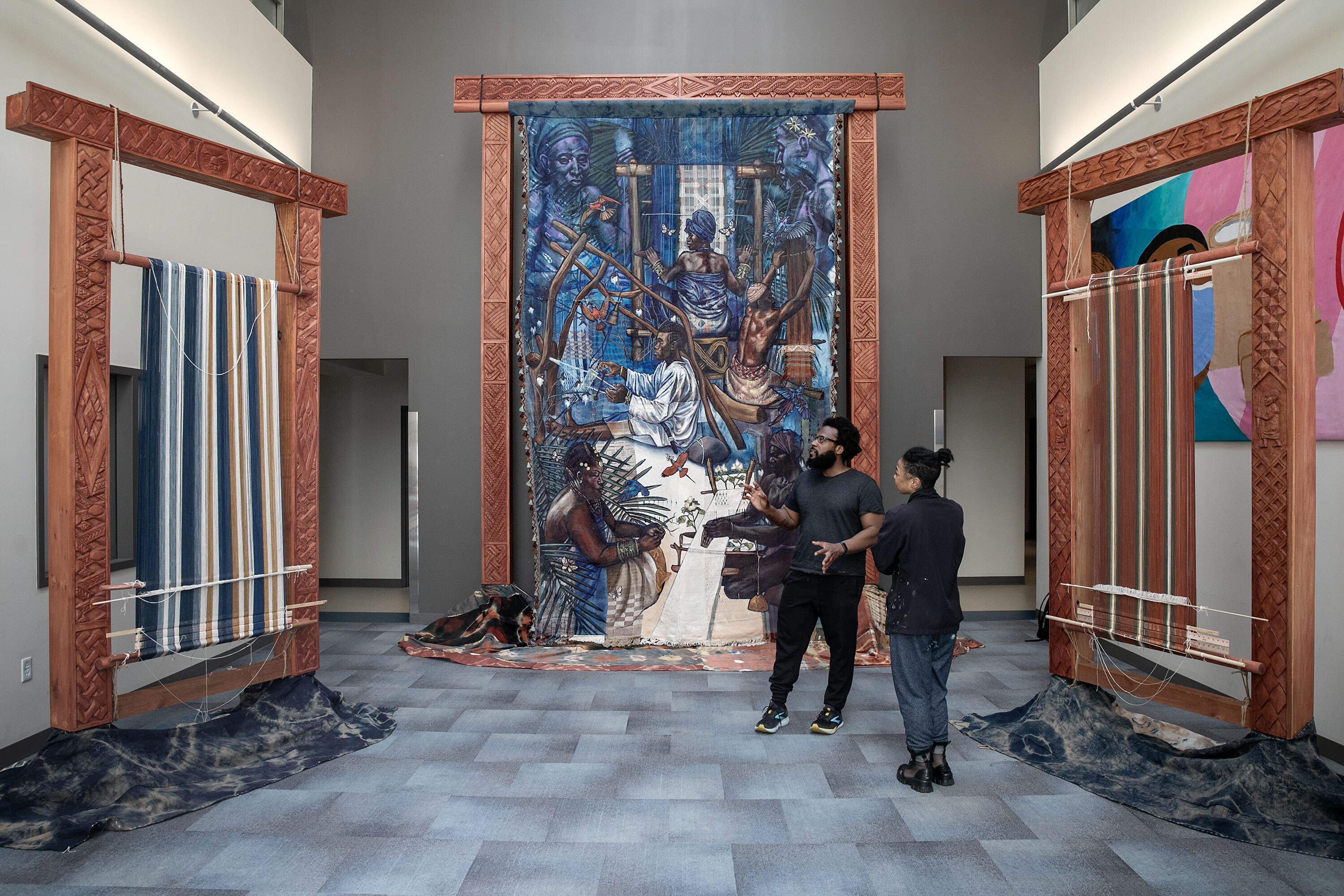
“Under the Spider’s Web” is part of the inaugural Boston Public Art Triennial, a showcase of 20 commissioned public artworks across the city on view through October. Hamilton’s work now sits in the Health Sciences Building at Roxbury Community College, where students and community members can sit and engage with it.
Hamilton, who grew up in Roxbury, is a Boston-based artist and educator who works with figurative drawing and painting as well as resist dyeing, weaving and woodcarving. These skills come together in his new work. Hamilton dyed and wove many of the cloth pieces sewn together to create the canvas.
“ Many of the traditions that I’m depicting, they’ve transformed and changed over time. Some are more prevalent than others, but each of them still has living practitioners,” he said.
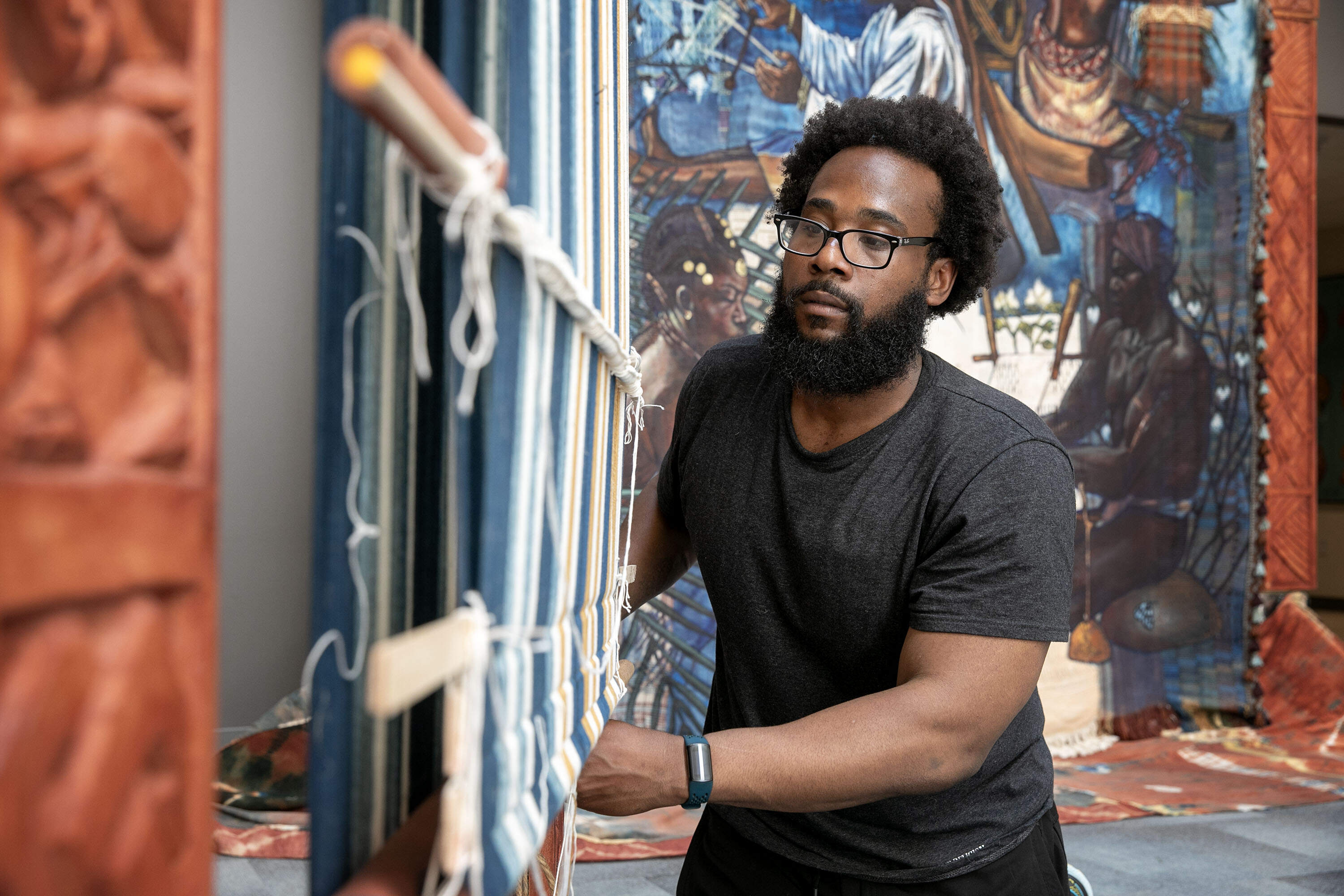
Because the cloth pieces that make up “Under the Spider’s Web” vary widely in texture, Hamilton’s painting process differs markedly from working on traditional canvas.
Reflecting on his college years, he recalled his early experiments with unconventional surfaces. “ I was always looking for materials that I could use as surfaces, so I would paint on pieces of wood. I would paint on things that had very gnarly textures. I used to love painting on composite board, so it’s like these pieces of glued-together wood chips, which leave really crazy textures,” he said. “So I got really used to painting on things that were not meant to be painted on.”
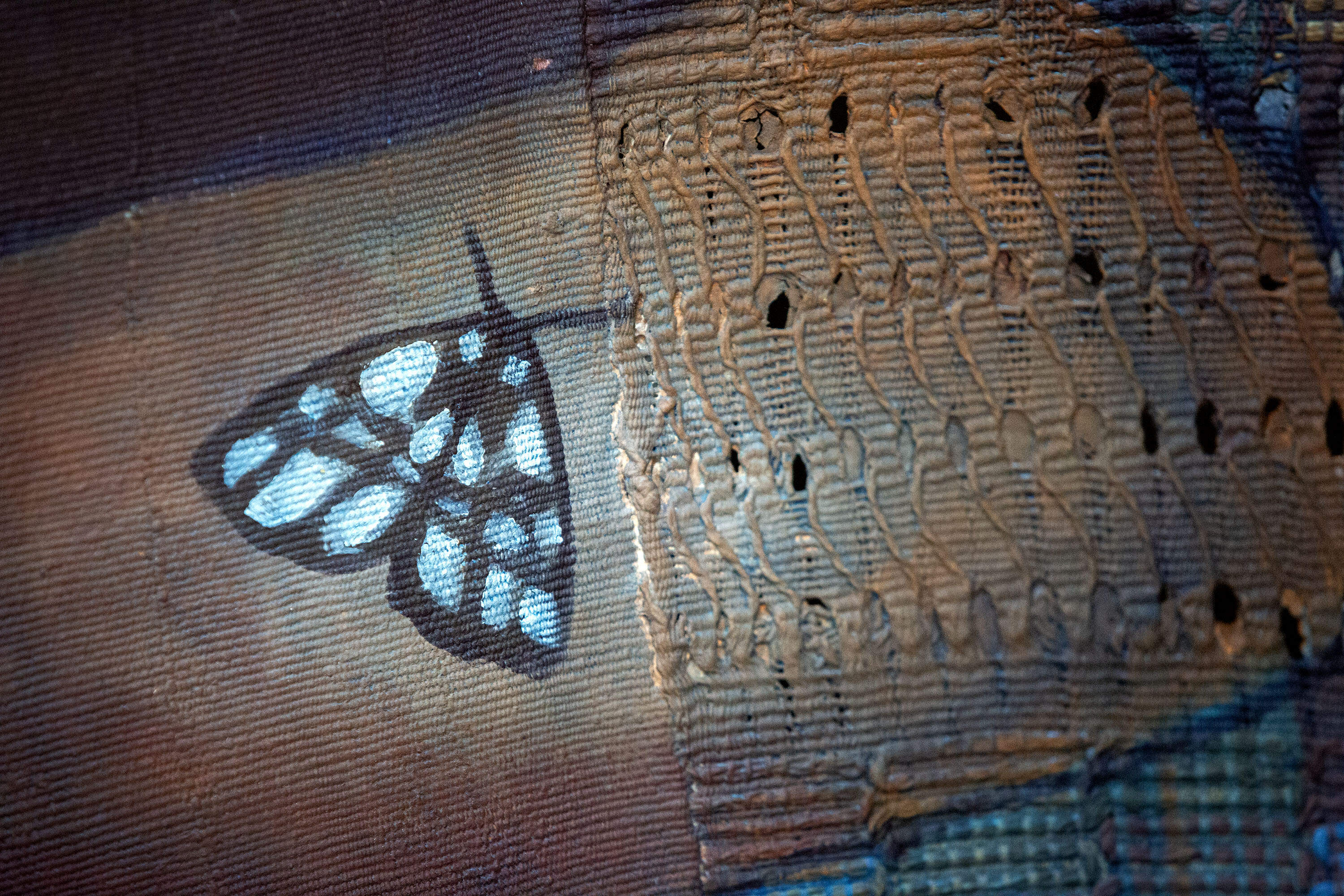
The challenge was making sure both mediums were highlighted because the canvas is its own artwork.
“ Both of these things are complimenting each other because what I don’t want to do is spend all this time weaving something and also thinking about respecting this as an art form in itself, like making sure that both of those things are clear in the work in the finished piece,” he said.
Hamilton worked with assistant Naijah Garrett to carve intricate wooden frames for the piece and two working looms called “Oruko Pe: The Names (Pattern) are Complete.”
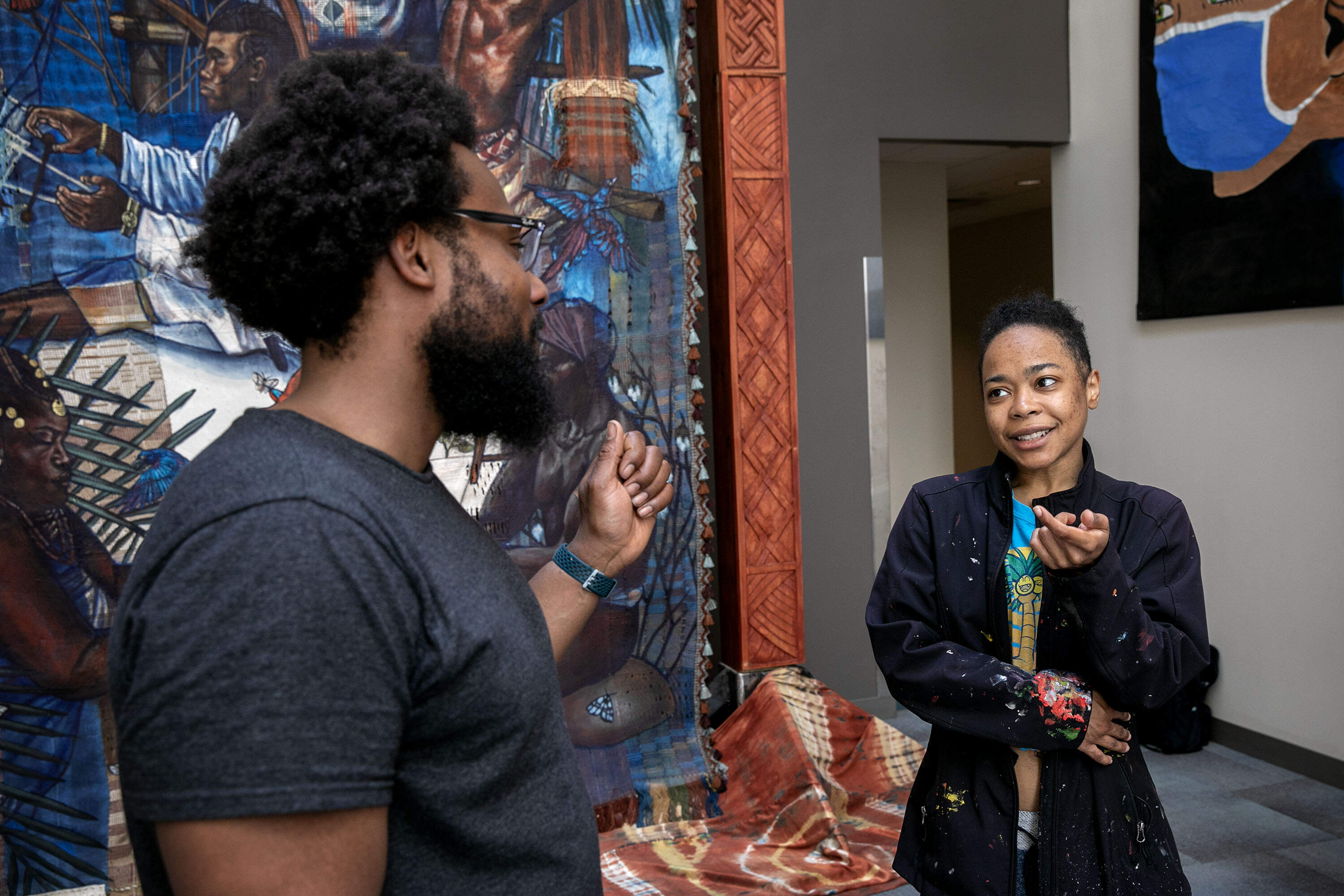
Assistants Ja’Hari Ortega and Jordan Nelson will weave on one loom while Hamilton works on another throughout the duration of the Triennial. Hamilton wanted to demonstrate the weaving process and how much work goes into creating cloth.
“ We not only learn the techniques, but the history as well,” said Ortega as she sewed skirts to cover the steel frame of “Under the Spider’s Web.” “And to be physically put in a space where you’re creating and knowing that other people are also in this physical position and do it so naturally and have done it for years and years and years, it’s an interesting experience. Weaving is not my primary practice, so doing that, I learned a lot about my body and my stamina in a different way.”
Throughout the Triennial, Hamilton will host free weaving and dyeing workshops designed to revive these ancestral traditions within Black communities. These classes will intentionally focus on BIPOC communities, fostering both cultural connection and creative skill-building.
A decade ago, the artist learned traditional upright loom weaving during a residency with Arts Connect International in Nigeria. He studied at the Nike Centre for Art and Culture for nine months. Hamilton learned about traditional wood carving, weaving and dyeing techniques.
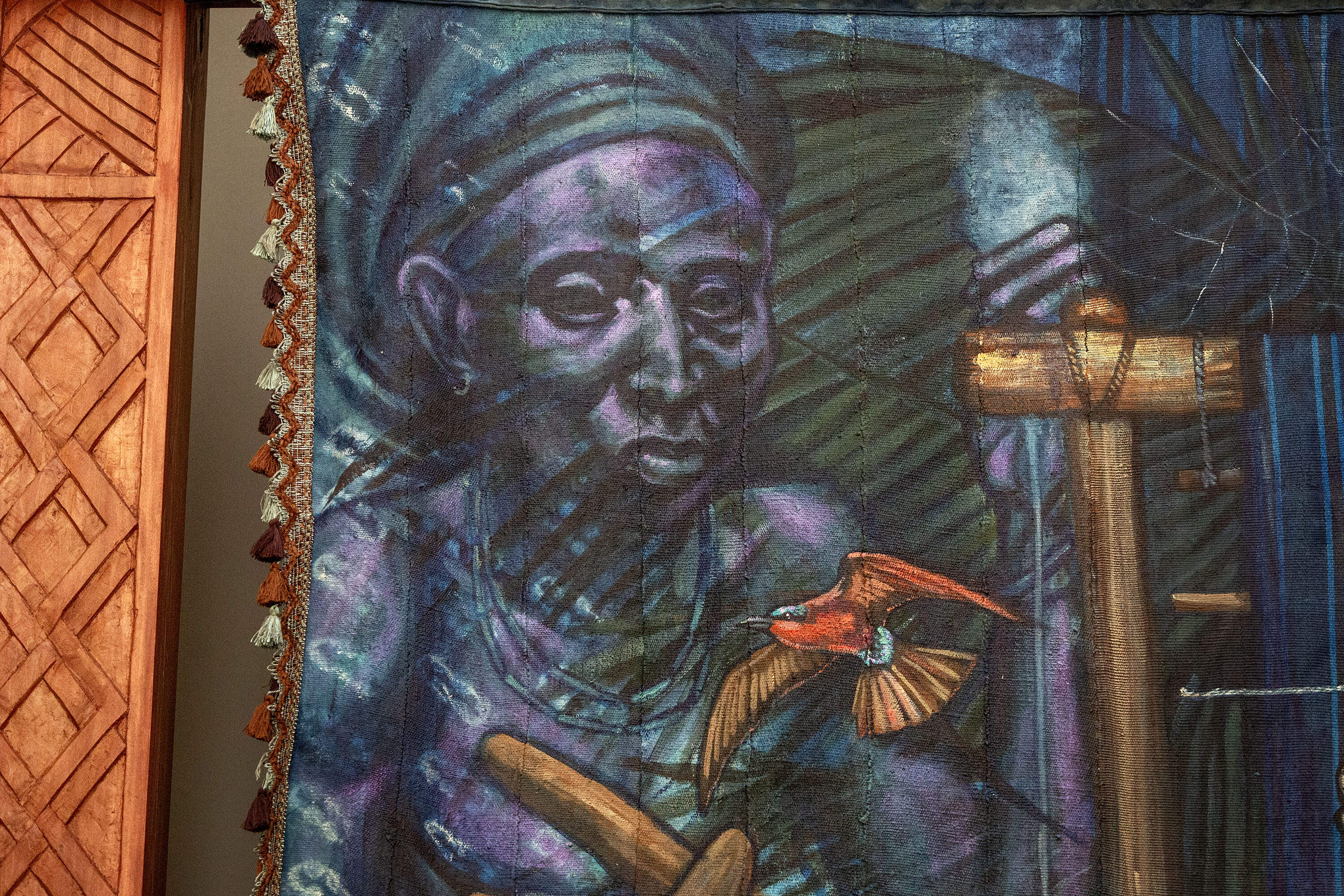
“ Nigeria has an incredible artist community, so many talented contemporary artists there, and also a very deep and storied art history,” he said.
The artist visited the Osun-Osogobo Sacred Grove and marveled at the natural landscape.
“ So I remember that being a very transformative experience because that was where I was learning weaving. That’s where I was learning natural indigo dyeing,” he said. “You also see cotton and indigo growing in that area. And it was there where I really started to think about the materials that I was working in.”
In depicting the weavers in “Under the Spider’s Web,” Hamilton took care in examining how consent is presented in the archival images he referenced.
“ Especially considering that many of these images are colonial images, I feel like you can tell when there is an understanding and consent between the photographer and the subject,” he said.
Hamilton’s work will be accompanied by a companion resource where visitors can learn more about weaving traditions and the history behind them. He is actively working on completing this resource.
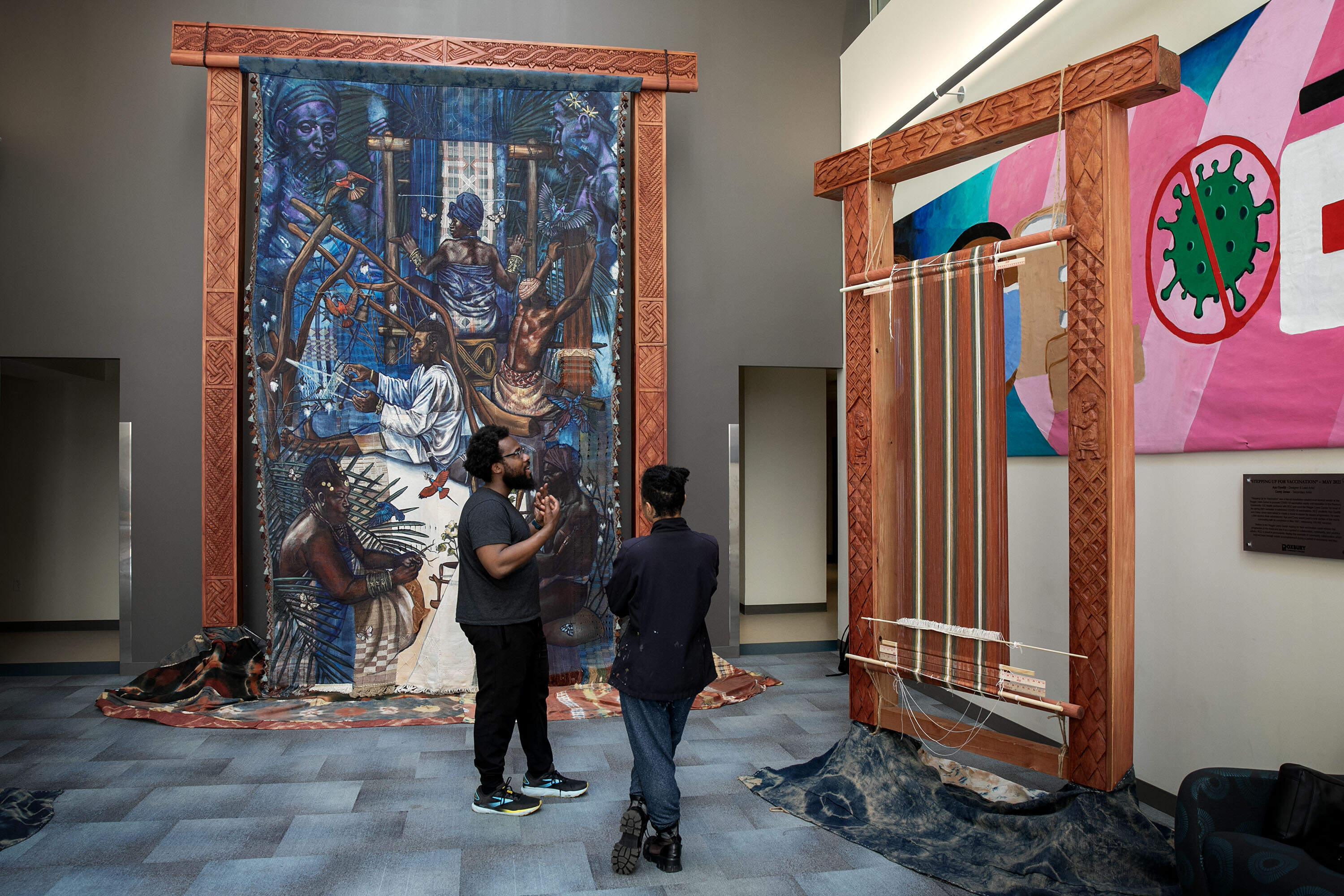
“ I think that it’s my responsibility as somebody who, not only is a practitioner and an artist, but also as somebody who is studying these traditions and these histories as a scholar to think about how accessible that is to everyday people, specifically everyday people in my community,” he said.
Initially, the project was a representation of Black craft. As Hamilton studied the piece in the final stages of installation at Roxbury Community College, he explained that the physical cloth held more meaning.
He reflected on the burial traditions of west and west central Africa where people are buried with cloth. And he mourned his ancestors who died during the transatlantic slave trade and didn’t receive a proper burial.
Hamilton ruminated on “ all of the clothing that was tanned, torn from their bodies, all of the wrappers and robes and other items of clothing that they weren’t able to inherit from their parents, the wedding dowries that they didn’t receive that included cloth, all of these different important parts of life that they weren’t able to receive.”
He dedicated “Under the Spider’s Web” to them.




